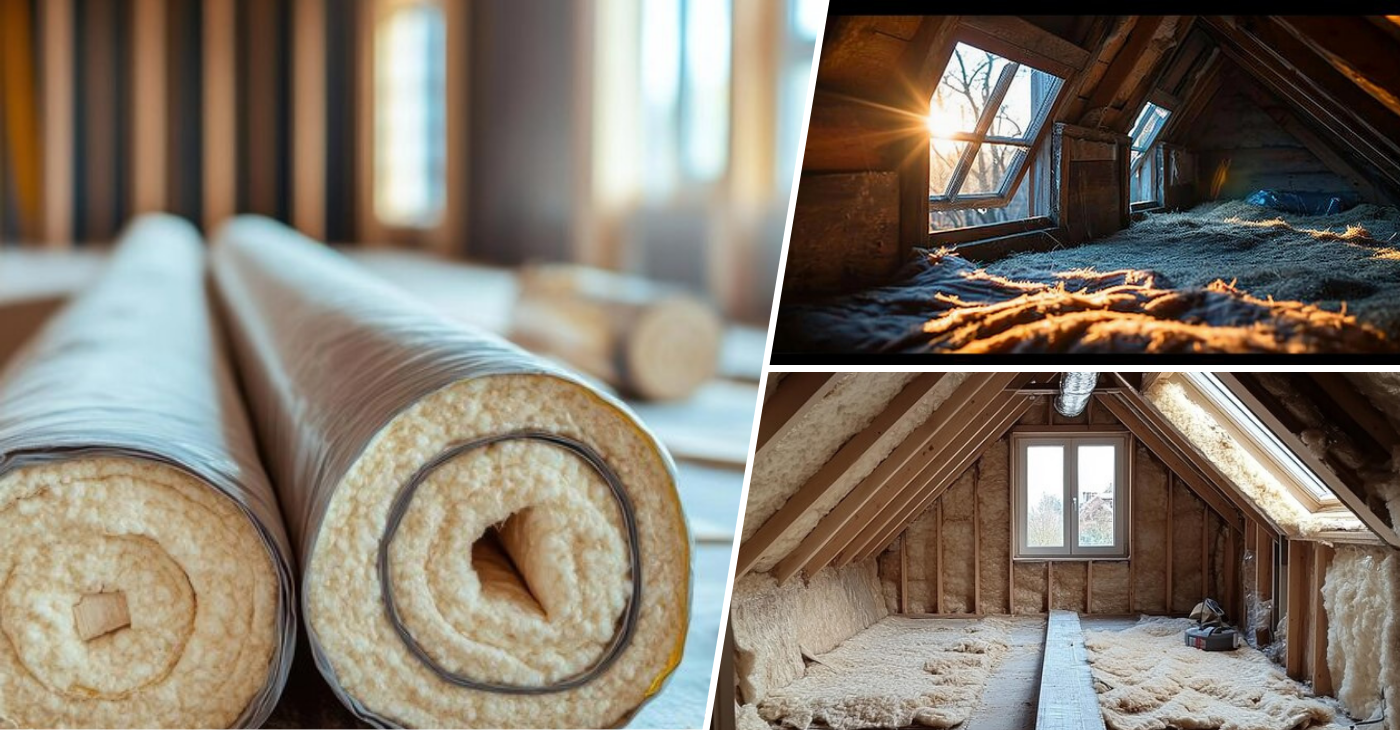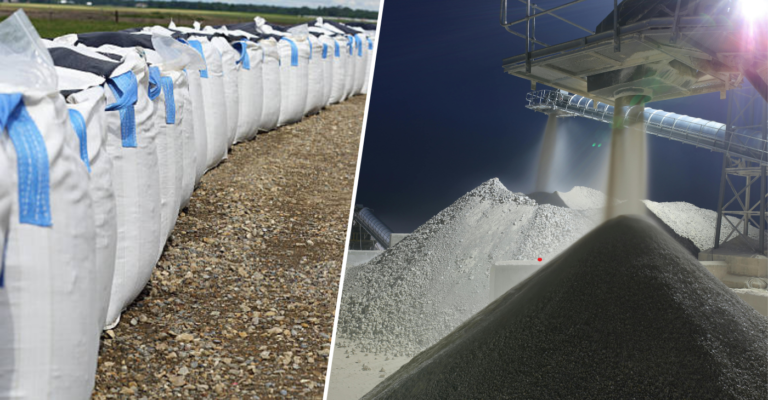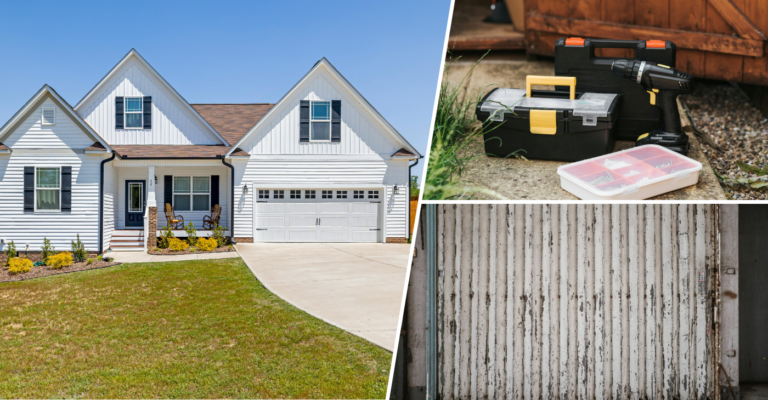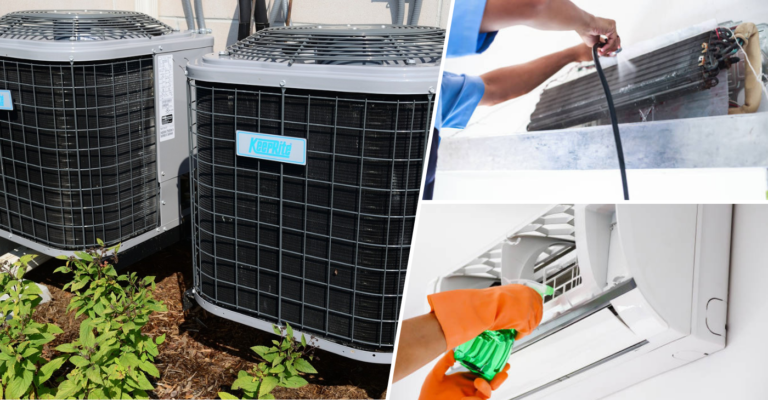Guide: Loft insulation roll – Why you should upgrade
Loft insulation roll is one of the most efficient ways to improve energy efficiency in your home. This roll serves as a blanket-like material. It is unrolled and placed between the joists in a loft space. It helps prevent heat from escaping through the roof, effectively reducing energy consumption and cutting down on heating bills. The result is a more comfortable indoor environment, as insulation maintains a stable temperature throughout the year. This article explores why upgrading loft insulation is crucial and outlines the different types of loft insulation rolls available.
What is loft insulation roll?
Loft insulation rolls are thick, blanket-like materials. They are designed to be unrolled and placed between the joists in your loft. These rolls are typically made from materials like mineral wool, fibreglass, or natural wool. Their main function is to act as a thermal barrier. They trap heat inside your home, preventing it from escaping through the roof.
Types of loft insulation rolls
- Mineral wool rolls: This is a high-performing choice often used in both residential and commercial builds. It’s popular due to its high thermal resistance and excellent acoustic insulation. Mineral wool is easy to install between ceiling joists, offering a tight seal to reduce heat loss.
- Fibreglass rolls: Fibreglass offers a balance of affordability and thermal performance. It’s commonly used in new builds and renovation projects. Fibreglass is also moisture-resistant, making it suitable for loft spaces prone to condensation.
- Sheep’s wool: This eco-friendly material is a niche choice, especially in green building projects. It’s breathable, naturally fire-resistant, and excellent at regulating moisture in the roof space. Although costly, it’s ideal for projects that prioritise sustainability.
- PIR boards (Polyisocyanurate): While not technically rolls, PIR boards provide superior thermal insulation with a smaller profile. They are commonly used in loft conversions, offering high R-values without compromising loft space.
How much does loft insulation cost?
The cost of loft insulation rolls varies depending on the material and the size of the area to be insulated:
- Glass wool: Priced around £250 for 25m². It’s a budget-friendly option with decent thermal performance, suitable for most homes.
- Rock wool: Costs about £265 for 25m². It offers better soundproofing than glass wool, making it ideal for noisy areas.
- Sheep’s wool: A premium, eco-friendly choice that costs around £750 for 25m². It’s a sustainable option, ideal for green construction projects, with excellent moisture control.
- PIR boards: Range from £750 to £915 per 25m². These provide exceptional thermal efficiency with a thinner profile, making them perfect for loft conversions where space is limited.
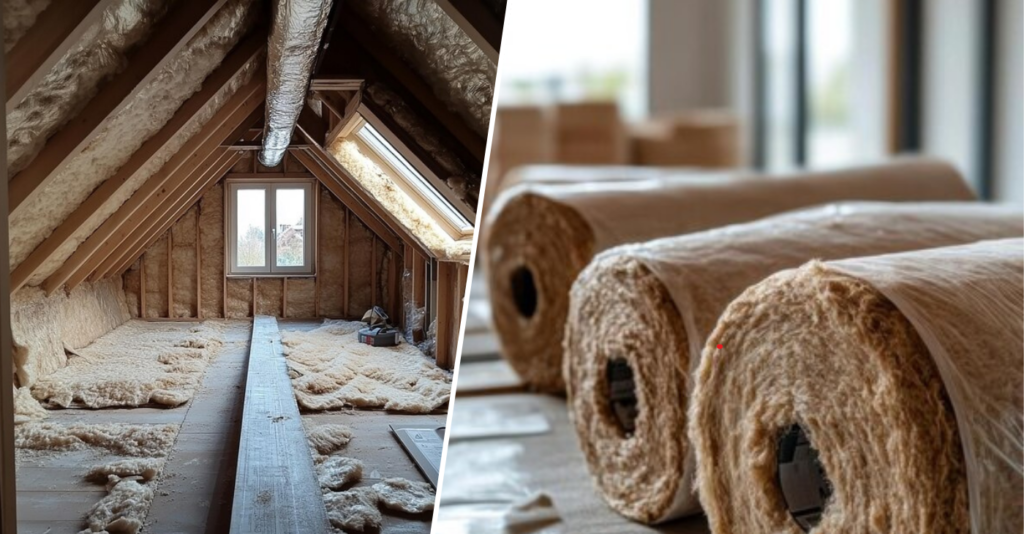
Why upgrade your loft insulation?
Upgrading loft insulation can reduce heat loss through the roof by as much as 25%. It’s crucial for both new builds and retrofits to meet modern building regulations, particularly regarding U-values. A well-insulated loft improves the thermal envelope. It reduces overall energy consumption. This leads to lower energy bills and helps achieve sustainability goals. It also helps in meeting certifications like BREEAM.
Poor insulation can lead to thermal bridging. This happens when gaps or weaknesses in the insulation layer allow heat to escape. Using a loft insulation roll with the correct R-value and thickness, such as 270mm of mineral wool, eliminates this issue. This creates a consistent thermal barrier that prevents heat loss.
Benefits of upgrading loft insulation
Upgrading loft insulation can greatly improve a home’s energy efficiency. Here’s why it’s a smart investment:
1. Better thermal performance
Upgrading insulation helps reduce heat transfer between inside and outside, making your home warmer in winter and cooler in summer. This enhances energy efficiency by lowering the building’s U-value, reducing energy consumption for heating and cooling.
2. Lower energy use
Old insulation often has gaps that allow heat to escape. Modern insulation creates a consistent barrier that minimises heat loss, cutting down energy use and saving money on bills.
3. Compliance with building codes
Modern insulation meets regulatory standards. In the UK, for example, loft insulation should be at least 270mm thick to meet energy efficiency requirements. This upgrade ensures your home is up to code and energy-efficient.
4. Improved energy efficiency in older homes
Many older homes have insufficient insulation, leading to heat loss. By upgrading, you can prevent heat from escaping and improve the home’s energy efficiency, reducing the strain on your heating system.
5. Lower heating bills
Insulating your loft properly helps retain heat, meaning less energy is required to keep your home warm. This directly reduces heating costs, making the upgrade a cost-effective solution in the long term.
Soundproofing with loft insulation
High-density materials like mineral wool offer excellent acoustic insulation. This makes them highly suitable for urban areas or multi-unit dwellings. Soundproofing is an important factor when dealing with loft conversions, especially in high-traffic environments where reducing sound transmission is a priority.
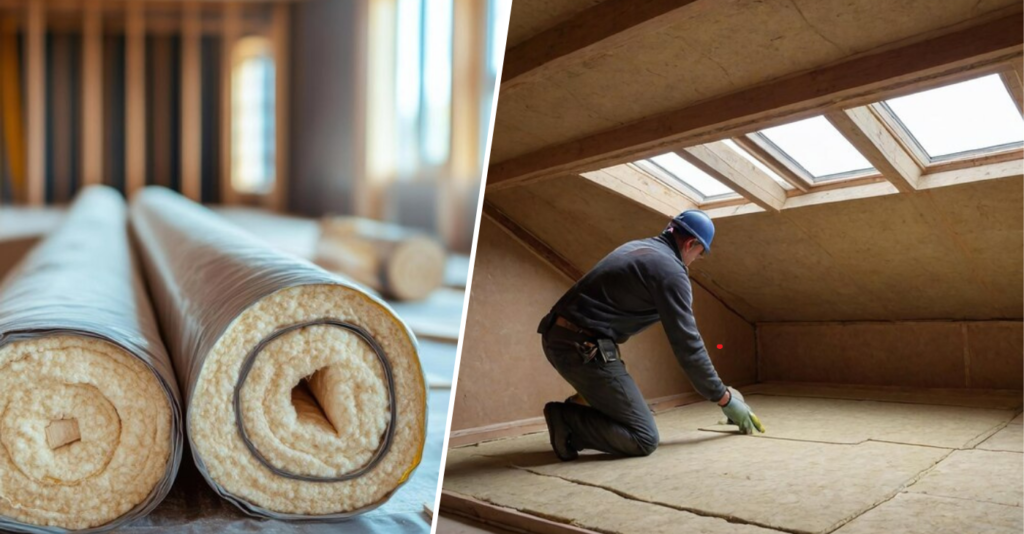
Sustainability and environmental considerations
Using eco-friendly materials like sheep’s wool or cellulose appeals to environmentally conscious clients. These materials are renewable and biodegradable. It contributes to reduced carbon footprints. Sustainable materials are often chosen to meet building certifications like BREEAM or LEED, which recognize eco-friendly construction practices.
Regulatory requirements for loft insulation
UK building regulations recommend a minimum insulation thickness of 270mm in loft spaces to meet energy efficiency standards. This helps lower a building’s U-value, which measures the rate of heat loss. Ensuring compliance with Part L of the Building Regulations is essential in both new builds and retrofit projects, as this ensures buildings meet current thermal performance standards.
Professional installation vs DIY
Installing blanket insulation can be a simple DIY task in regular loft spaces. However, more complex installations require specialised equipment. Poor installation may lead to ventilation issues, condensation buildup, and even structural damage.
Professionals also consider factors like the building’s age, roof type, and any obstacles like wiring or water tanks. If the loft is intended for storage or as a living space, adding raised flooring systems ensures that the insulation remains effective. Compressing insulation can reduce its performance by up to 50%, so proper installation is key to maintaining thermal efficiency.
Additional factors to consider
When calculating costs, remember that professional installation adds labor fees. These can range between £200 to £300 per day, depending on the complexity of the job and your location. For larger or more intricate projects, like those requiring PIR boards or spray foam insulation, installation can take longer and be more costly. However, the long-term savings on energy bills often outweigh the initial investment.
Loft insulation roll also plays a key role in improving a building’s overall energy rating, which can make a significant difference when selling or renting a property. Additionally, various grants and incentives may be available to offset some of the costs, especially for eco-friendly or energy-efficient upgrades.
Conclusion – Upgrade to loft insulation roll
Upgrading your loft insulation roll is a simple yet effective way to improve energy efficiency. It cuts down heat loss through the roof, reduces energy consumption, and lowers heating bills. Whether you’re working on a new build or upgrading an older home, modern insulation helps meet building regulations and enhances comfort. Choosing the right loft insulation roll type ensures better thermal performance, soundproofing, and long-term savings. While the initial cost may vary, the benefits in energy savings and increased property value make it a wise investment.

